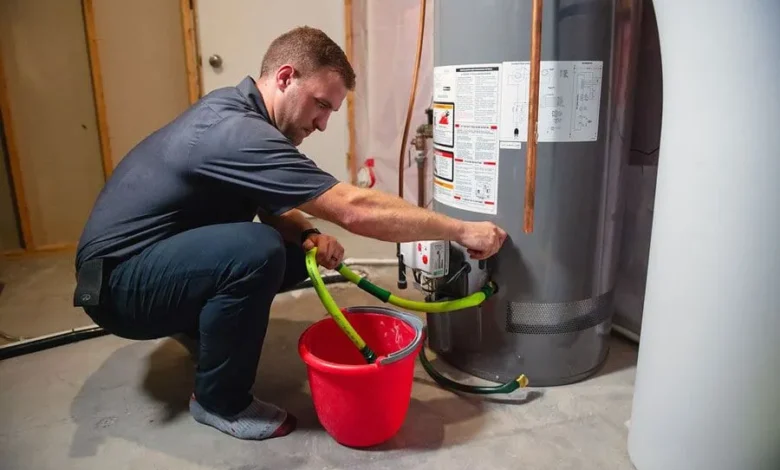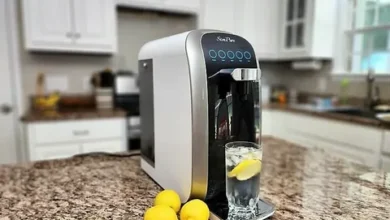The Complete Guide to Replacing Your Water Heater: What Every Homeowner Needs to Know

A water heater is one of the most essential appliances in any home. It provides the hot water needed for bathing, cleaning, cooking, and more. Yet, like all mechanical systems, it has a lifespan and will eventually require attention. When repair is no longer feasible or cost-effective, water heater replacement becomes necessary.
In this comprehensive guide, we’ll cover everything a homeowner should know about replacing a water heater—from identifying the signs of failure to choosing the right unit and understanding the installation process. Whether you’re facing cold showers or planning a proactive upgrade, this article will help you make informed decisions.
Understanding the Role of Your Water Heater
Before diving into replacement, it’s important to appreciate what your water heater does. The primary function of this appliance is to heat and store water, delivering it on demand when you turn on the tap. It operates either through electricity or gas, with options including tank-style and tankless models.
There are three main types of water heaters:
- Conventional Storage Tank Water Heaters: These are the most common, holding a certain volume of heated water in a tank.
- Tankless (On-Demand) Water Heaters: These heat water directly without using a storage tank, offering increased energy efficiency.
- Heat Pump Water Heaters: These use electricity to move heat from one place to another instead of generating it directly.
Each type has its own pros and cons, influencing your choice during the replacement process.
Signs It’s Time for a New Water Heater
While regular maintenance can extend the lifespan of your unit, most water heaters are designed to last between 8 and 12 years. Here are key indicators that water heater replacement might be necessary:
1. Age of the Unit
If your water heater is approaching or has surpassed a decade in service, it may be time to start considering replacement. Even if it seems to be working fine, age alone can increase the risk of a sudden breakdown.
2. Rust and Corrosion
Visible rust on the tank or rust-colored water from your faucets can indicate internal corrosion, especially if you own a steel water heater. Once corrosion sets in, leaks are inevitable.
3. Water Leaks
Leaking water around the base of the unit is a red flag. Minor issues like loose fittings can be repaired, but leaks from the tank itself often require a full replacement.
4. Inconsistent Water Temperature
Fluctuating water temperatures or a complete lack of hot water is a clear sign of trouble. While it could be a thermostat or heating element issue, recurring problems often point to a failing unit.
5. Rising Energy Bills
An old or inefficient water heater can drive up your utility bills. Replacing it with a newer, energy-efficient model can reduce your monthly expenses.
6. Strange Noises
Popping, cracking, or rumbling sounds may indicate sediment buildup at the bottom of the tank, which can reduce efficiency and damage the heater over time.
Choosing the Right Water Heater
Once you’ve determined that water heater replacement is necessary, the next step is selecting the best type for your home. Several factors should influence your decision:
Energy Source
- Electric Water Heaters are widely available and easy to install but can be more expensive to operate, depending on your local electricity rates.
- Gas Water Heaters generally cost less to operate but require a gas supply and proper ventilation.
Tank vs. Tankless
- Tank-style water heaters are ideal for households that require large amounts of hot water simultaneously.
- Tankless models are more efficient and compact, heating water only when needed.
Size and Capacity
Choosing the right size depends on the number of people in your home and your daily water usage. A family of four typically needs a 50-gallon tank, while smaller households may be fine with a 30- or 40-gallon model.
Energy Efficiency
Look for units with a high Energy Factor (EF) or Uniform Energy Factor (UEF) rating. ENERGY STAR® certified models often offer long-term savings despite a higher upfront cost.
Installation Considerations
Replacing a water heater isn’t just a simple swap; it involves several technical steps and safety considerations. Hiring a licensed professional is strongly recommended for the following reasons:
Proper Sizing and Selection
A technician will assess your home’s hot water needs and suggest a suitable unit based on usage patterns and energy preferences.
Safe Removal of the Old Unit
Water heaters can be bulky and heavy, often weighing over 150 pounds. A professional can safely drain and remove the old tank, avoiding property damage or personal injury.
Code Compliance
Installation must adhere to local building codes and regulations. Professionals ensure your system is up to code, with appropriate ventilation, insulation, and seismic strapping where required.
Leak Testing and Calibration
Once installed, the system is tested for leaks, and temperature settings are calibrated for efficiency and safety.
Costs Involved in Water Heater Replacement
Understanding the full cost can help you budget more effectively. Here’s a breakdown of typical expenses:
- New Unit: $500–$2,500 depending on type and features
- Installation Labor: $300–$1,000
- Permit and Inspection Fees: $50–$150
- Additional Materials: Pipes, valves, insulation, etc.
Tankless units tend to have a higher initial cost due to their complexity and the need for upgrades to electrical or gas lines. However, they often result in long-term savings.
Maintenance Tips to Extend Lifespan
Whether you’ve just installed a new unit or are trying to get a few more years out of an old one, proper maintenance can help maximize its lifespan:
- Flush the Tank Annually: This removes sediment buildup, improving efficiency and preventing damage.
- Test the Pressure Relief Valve: Ensure it functions properly to prevent tank overpressure.
- Check the Anode Rod: This sacrificial rod protects the tank from corrosion. Replace it every 3–5 years.
- Insulate the Tank and Pipes: Reduces heat loss and improves performance, especially in colder climates.
- Schedule Professional Inspections: Annual checkups can catch minor issues before they become costly repairs.
Environmental Impact and Energy Efficiency
Today’s water heaters are far more efficient than older models. A well-planned replacement not only benefits your utility bills but also reduces your home’s carbon footprint.
Tankless water heaters, in particular, can reduce energy consumption by up to 30%. Heat pump models are also incredibly efficient, using up to 60% less energy than traditional electric heaters.
Recycling the old unit is another environmentally friendly move. Most parts, including metal and insulation, can be reused or repurposed.
Final Thoughts
Your water heater plays a vital role in your daily comfort and home functionality. Recognizing when it’s time for a water heater replacement in Mission, and making smart choices during that process, can save you time, money, and frustration in the long run.
Whether you’re upgrading to a more efficient model or replacing a failing unit, the key is to stay informed. Work with professionals, consider your household’s unique needs, and don’t wait for a cold shower to make the decision.
Investing in a reliable, energy-efficient water heater ensures a steady supply of hot water and peace of mind for years to come.



